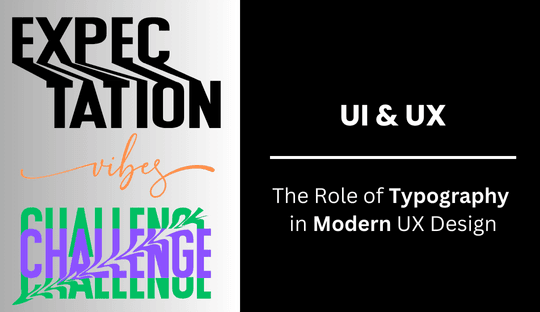
The Role of Typography in Modern UX Design
In the realm of digital design, typography plays a pivotal role in shaping user experiences. For creative brand companies like Flykez CO, based in Estonia, leveraging the power of typography can significantly enhance the effectiveness of their website design and development services. By understanding and utilizing typography effectively, Flykez CO can create visually appealing, accessible, and user-friendly interfaces that resonate with their audience.
Understanding Typography in UX Design
Typography is more than just selecting fonts; it’s about creating a visual language that communicates the brand’s message clearly and effectively. It involves the strategic use of typefaces, font sizes, line spacing, and text alignment to guide the user’s journey and ensure a seamless experience.
The Impact of Typography on User Experience
- Readability and Legibility
The primary goal of typography in UX design is to ensure that the text is readable and legible. This means choosing fonts that are easy to read at different sizes and on various devices. For Flykez CO, ensuring that their website content is easily readable will help users quickly understand their service offerings, such as search engine optimization, brand design, and digital marketing.
- Visual Hierarchy
Typography helps establish a visual hierarchy, guiding users through the content in a logical and intuitive manner. By using different font sizes, weights, and styles, designers can highlight key information and create a clear structure. This is crucial for Flykez CO’s website design, where important information about their services and expertise needs to stand out.
- Brand Identity
Typography is a powerful tool for expressing brand identity. The choice of typeface can convey a brand’s personality and values. For Flykez CO, selecting the right typography can reinforce their brand identity as a cutting-edge, professional, and creative design agency in Estonia.
Integrating Typography with Modern UI/UX Tools
Modern UI/UX tools offer extensive features to experiment with and perfect typography. Tools like Adobe XD, Sketch, and Figma provide designers with the flexibility to test different typefaces and styles in real-time, ensuring that the final design is both visually appealing and functional. Also read About Creating Personalized User Experiences with AI
Using Design Systems for Consistency
Design systems are essential for maintaining consistency across different platforms and touchpoints. They include a set of standards for typography, ensuring that the same fonts, sizes, and styles are used throughout a project. For Flykez CO, implementing a robust design system can help create a unified look and feel across all their digital assets, enhancing the overall user experience.
Measuring Success with UX Metrics
To ensure that the typography choices are effective, it’s important to measure their impact using UX metrics. Key metrics to consider include user engagement, readability scores, and user feedback. By analyzing these metrics, Flykez CO can make data-driven decisions to refine their typography strategy and improve user satisfaction.
Enhancing Engagement with UI Animation
Typography can be brought to life with subtle UI animations. For example, animating text during transitions can draw attention to important messages and create a more dynamic user experience. Flykez CO can use these animations to highlight key points in their content, making their website more engaging and interactive.
The Importance of UX Writing
Effective UX writing complements good typography by providing clear, concise, and user-friendly content. Good microcopy, such as button labels, error messages, and onboarding instructions, can significantly enhance the user experience. Flykez CO can use UX writing to ensure that their website communicates effectively and provides a seamless user journey.
Staying Current with UI Trends 2024
As we move into 2024, several typography trends are emerging that can enhance UX design. These include the use of bold and capitalized fonts for emphasis, the integration of custom typefaces to reinforce brand identity, and the adoption of responsive typography that adjusts seamlessly across devices. Staying updated with these trends will help Flykez CO offer cutting-edge solutions to their clients.
Conclusion
Typography is a crucial element of modern UX design, influencing readability, visual hierarchy, brand identity, and overall user satisfaction. By leveraging advanced UI/UX tools, adhering to design systems, and staying updated with the latest trends, Flykez CO can create personalized and engaging user experiences that set them apart in the competitive landscape of creative brand companies in Estonia. For more information on our services and to see how we can enhance your digital presence, visit Flykez CO.
